- Position:
- Chief engineer
Transportation of electric vehicles by sea
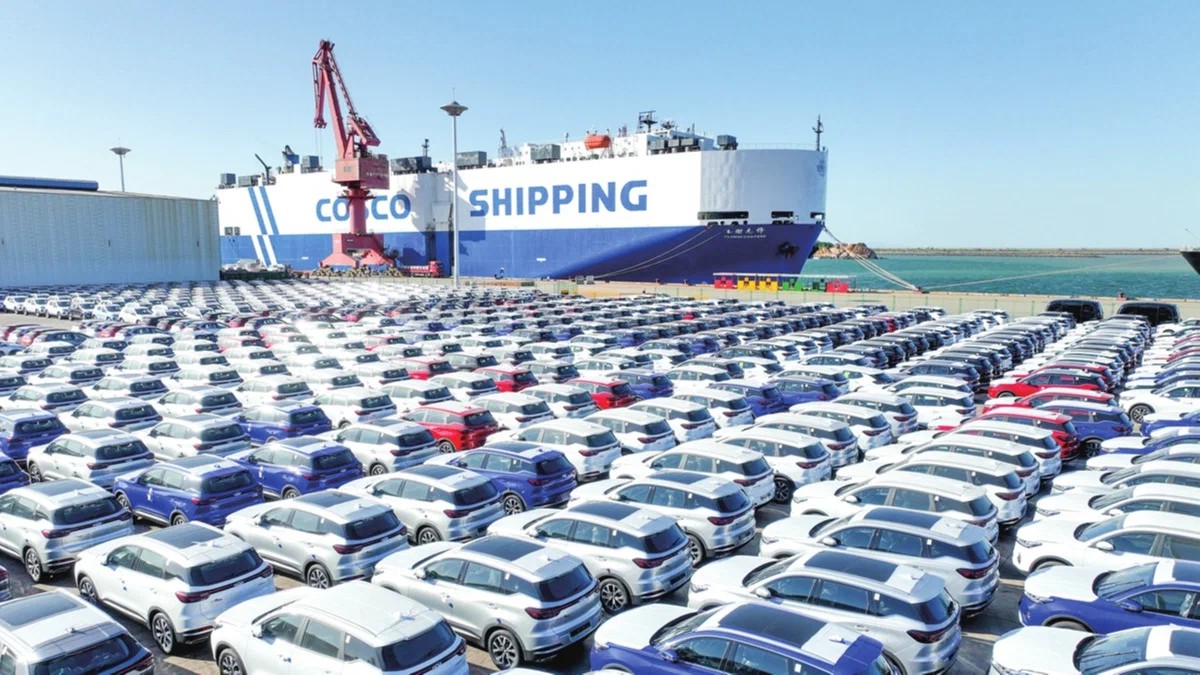
There is growing political and economic will to switch from internal combustion engines to electric vehicles.
At COP26 (the 26th United Nations Climate Change Conference), 24 countries and a group of manufacturers committed to completely phase out fossil fuel-powered vehicles by 2040.
At the same time, 30 countries agreed to work together to make electric vehicles available, affordable, and reliable in all regions by 2030 or sooner.
While this is all welcome, the reality of EV adoption has proven complex. Problems arise in everything from battery production to supply chains.
One of the unpleasant surprises has been the increasing frequency of fires on ships transporting such vehicles. Let's look at a few stories and try to understand the causes and consequences of these incidents.
Electric cars catch fire on ships and ferries

On February 17, 2022, the world's attention was drawn to the news of the Felicity Ace vessel burning in Portuguese waters.
On February 18, the crew of 22 people was evacuated after futile attempts to extinguish the fire, and the ship continued to drift in the Atlantic with thousands of burning premium Volkswagen Group cars on board, some of which were electric.
The cars were heading from Europe to the United States for sale, but never made it there. The fire raged for a whole week, and the first signs of its weakening appeared only 7 days after the fire.
The burnt-out ship sank on March 1, 2022, along with the remains of 3,965 premium cars with internal combustion engines and 281 electric cars.
After this incident, the world learned about electric car fires on ships, and the media reported that their lithium-ion batteries increase the intensity and duration of fires.
Although back in 2018, a similar fire on a similar ship with 3,500 cars on board took 9-10 days to extinguish, but did not attract such attention.
At first, these disasters were barely covered by the media. Only when Captain Joao Mendes Cabécas told Reuters that lithium-ion batteries in electric cars “keep the fire going” did the world’s news agencies suddenly put the story on the front pages.
Headlines appeared like “EVs May Not Have Caused Fire on Cargo Ship, But Now They’re a Raging Inferno,” “EVs Complicate Fire Fighting on Felicity Ace,” and so on.
More ship fires
The first fire in an electric car's traction battery on water occurred on the deck of the ship "Pearl of Scandinavia" on November 17, 2010, when it was sailing from Oslo to Copenhagen.
The car was a Nissan Qashqai, which had been converted by a Dutch enthusiast. The battery, which was not quite in good condition, was connected to a 220 V charging station, again through a homemade extension cord, made so that it could be used in several countries.
The total capacity of the converted Qashqai's battery is unknown. But in principle, that situation can be called a universal recipe for a potential disaster.
The official report of the Danish Fire Safety Institute states that the fire occurred in the battery, but the exact cause could not be determined. There were other electric cars on the same ferry, but fortunately the fire did not spread to them. Therefore, the incident did not attract media attention.
The refurbished battery began charging at 2% of its charge.
When the fire broke out, the car was “refuelled” to 53%. The fire alarm system alerted the crew to smoke at 5:58 a.m., and the sprinkler system began automatic extinguishing. Firefighters from Sweden were lowered onto the ferry by helicopter, and they extinguished the fire at 7:51 a.m. All passengers and crew members, following the evacuation rules, disembarked safely. No one was injured.
In response to the incident, the Danish Maritime Authority temporarily banned the charging of electric cars and other vehicles on all seagoing vessels.
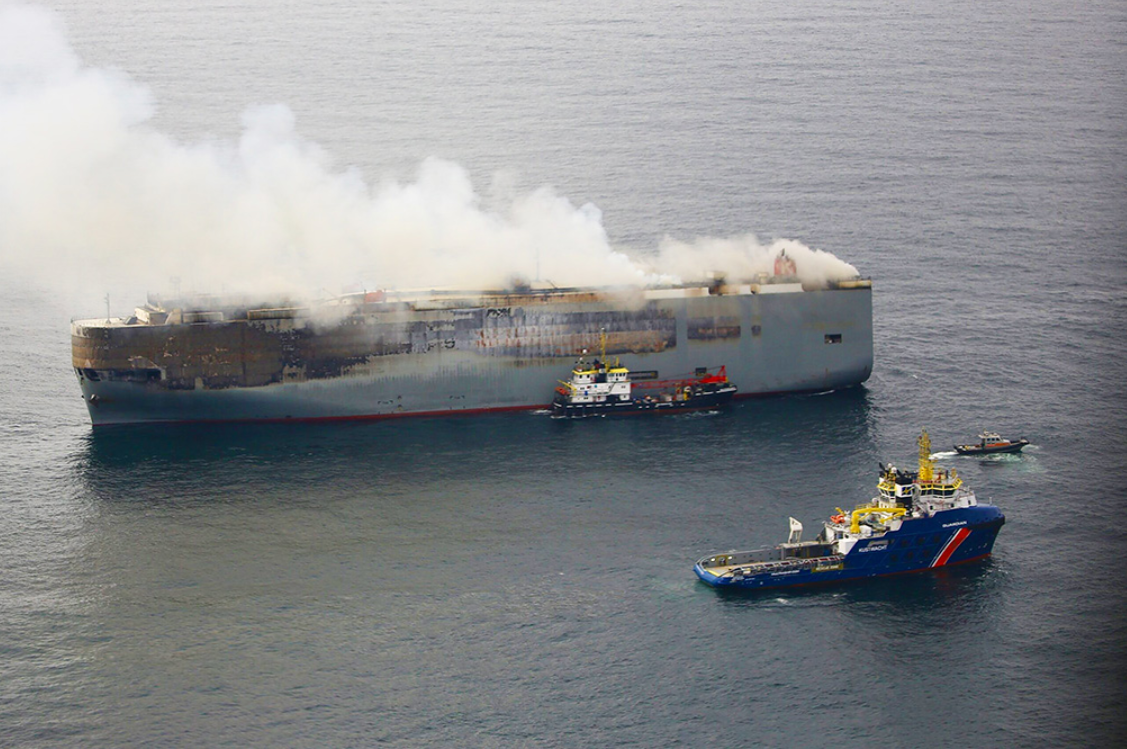
However, the MS Pearl of Scandinavia was not the only ferry to have a fire caused by an electric car. In the same 2010, three more similar incidents were reported on the following ferries:
- Commodore Clipper,
- Lisco Gloria,
- Mecklenburg-Vorpommern.
In all three cases, the fires on the car decks were thoroughly investigated.
But only the converted Qashqai on the MS Pearl of Scandinavia became an officially confirmed case of an electric car causing a fire on a sea vessel.
Volkswagen counters: only three of their electric cars have caught fire since 2017
Electric car battery fires are very rare, as proven by the special research project EV FireSafe. Volkswagen Group has been selling electric vehicles since 2014, with more than 760,000 units sold in 2021 alone, but only three lithium-ion battery fires in VW electric vehicles have been recorded in that time.
First case
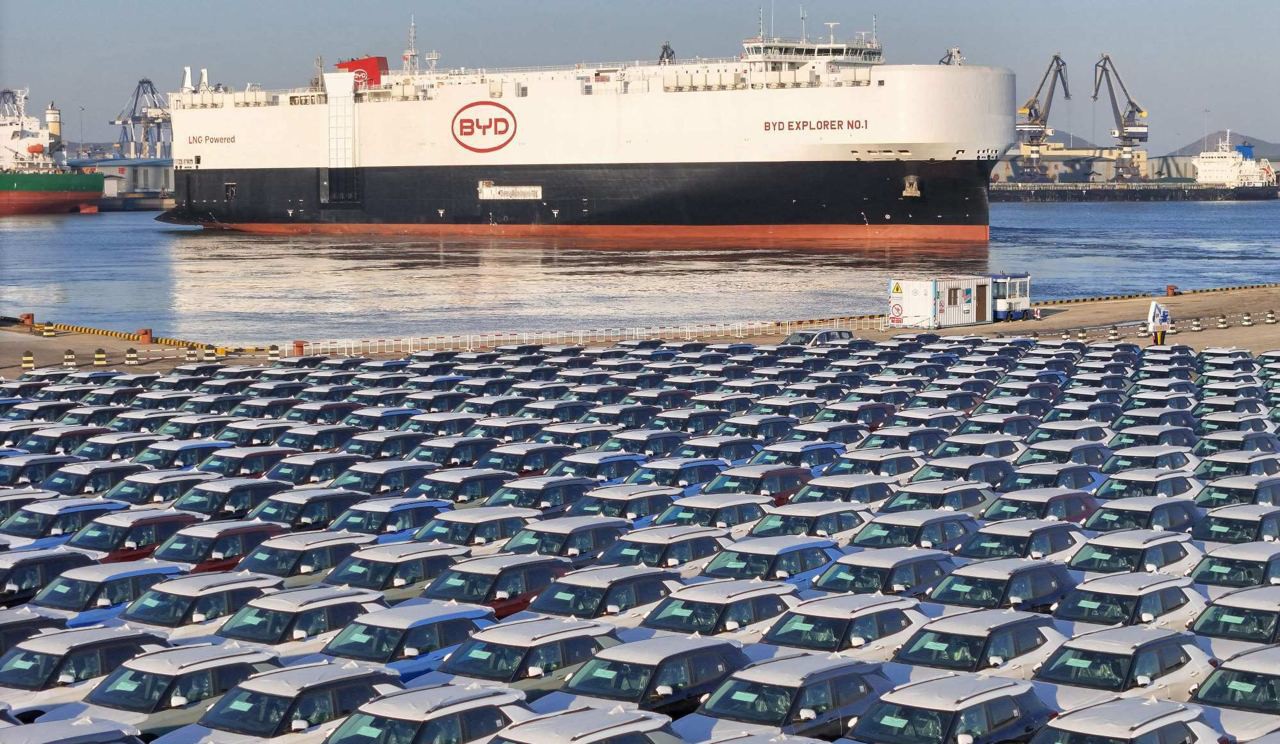
In December 2017, an e-Golf caught fire in Germany, requiring 21 firefighters to extinguish the fire.
It was the first incident involving an electric vehicle in the country. After cooling the battery and extinguishing the fire with water, the entire e-Golf was submerged in a container of fresh water to eliminate the risk of re-ignition.
The cause of the fire is still unknown.
In August 2021, the owner of a VW ID3 unplugged his electric car from the roadside in the Netherlands, put his child in a car seat, and then noticed smoke coming from the rear of the car.
The mother and child were unharmed, but the ID3 was completely destroyed by the fire.
The cause of the fire is still unknown. Interestingly, a first-generation Nissan LEAF parked behind him was damaged by the fire, but its battery did not catch fire.
Then, on February 13, 2022, a restaurant owner in Brussels called the fire department about a “burning smell.” Firefighters found the source of the smoke in the underground parking lot of a private residential building, where the smoke and heat extraction system of the building was activated. The ID3 parked there was completely engulfed in flames. It was parked separately and not connected to a charger.
The firefighters did not initially know that they were dealing with an electric vehicle. The vehicle was lowered to ground level with the help of a tow truck and immersed in a container of fresh water.
The Belgian fire department has developed and started using this extinguishing technology to extinguish electric vehicles. Interestingly, this method of suppression/containment of fire is practiced by fire departments, but is not very welcomed by electric vehicle manufacturers.
How do marine vessel owners respond to potential EM risks?
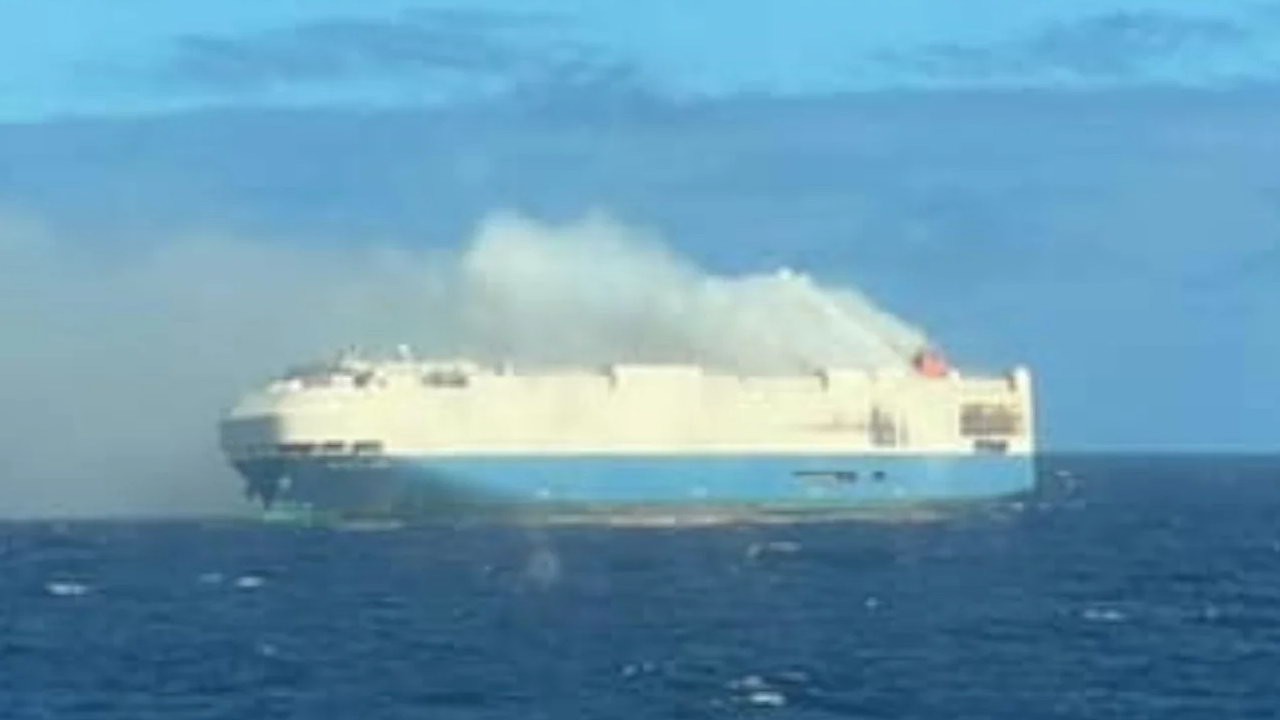
However, catastrophic fires on board sea vessels carrying cars do happen. And more often than ordinary people think. Here are just a few examples of such major emergencies:
- In February 2017, the MV Honor had a fire on the upper deck caused by a starter solenoid.
- The Auto Banner had an overheated car, which led to a fire in May 2018.
- The Grande America sank in March 2018 as a result of a fire.
- On New Year's Eve 2018, the Sincerity Ace burned down, killing five crew members.
- The Almaznoye Shosse, which carried 6,300 cars, was lost in a massive fire in June 2019.
However, the true causes of these fires could not be established, as well as their connection with electric cars. The only thing that is known for sure is that extinguishing fires in lithium-ion batteries is difficult in any situation, especially on a floating vessel.
The fact is that salty sea water cannot be used to extinguish burning lithium-ion batteries.
Despite the lack of evidence of cause and effect, all these incidents have led to the fact that ferry and ship owners have adopted new safety measures when transporting electric vehicles.
This is reasonable, given the obvious potential risk of transporting electric vehicles on ships. First of all, in sea conditions, there is a high risk of uncontrolled movement of cargo with damage to the battery and initiation of thermal runaway. This is the name of an uncontrolled chemical reaction inside the battery cells, leading to their ignition.
At the same time, a number of world battery experts have proven that lithium-ion batteries at a low charge level (less than 50%) are not able to support thermal runaway.
That is why the United European Car Carriers (UECC, i.e. a company specializing in the transportation of cars) set a minimum of 20% and a maximum of 50% charge for electric vehicles subject to passive transportation.
Hybrid models must be transported with the EV mode turned off. Following this, all sea carriers set these simple rules.
Norwegian ferry carrier ditching electric cars
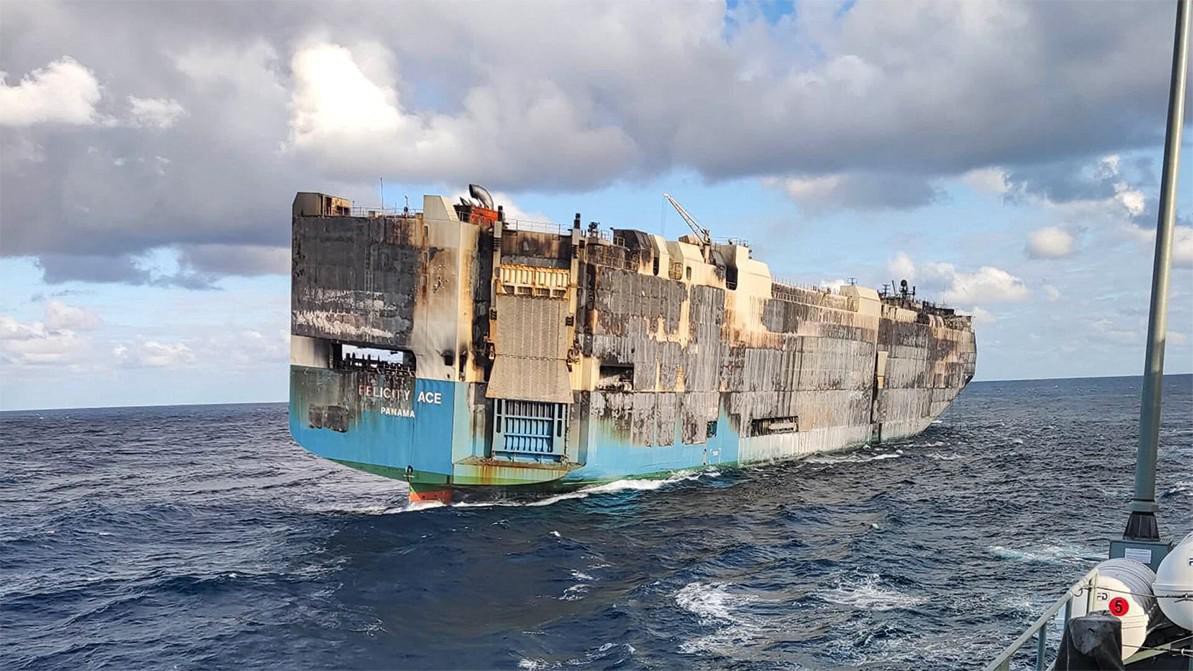
Some ship owners have resorted to more radical fire prevention measures.
For example, the Norwegian ferry company Havila Voyages has completely stopped transporting electric cars since January 2023.
A company representative said that the management of Havila Voyages acknowledges the fact that electric cars catch fire no more often than conventional cars with internal combustion engines.
However, the risks at sea are greatly increased by the already proven fact that if a lithium-ion battery catches fire, it cannot be extinguished with salty sea water. Attempts to do so lead to an intensification of the fire.
Havila Managing Director Bent Martini added that when vehicles with electric or hydrogen traction catch fire, external rescuers have to be called in, and while waiting for their arrival, not only the ship but also the crew themselves are at risk. Having weighed all the pros and cons, the Norwegians came to the conclusion that it is better not to take risks.
This was bad news for fans of the most popular and inexpensive way to deliver cars from Europe to the East - by ferry.
Now, for many of them, there is only one (land) route left for the delivery, which will negatively affect the price of the service and the car as a whole, which is already quite high.
Towards the future – with optimism!
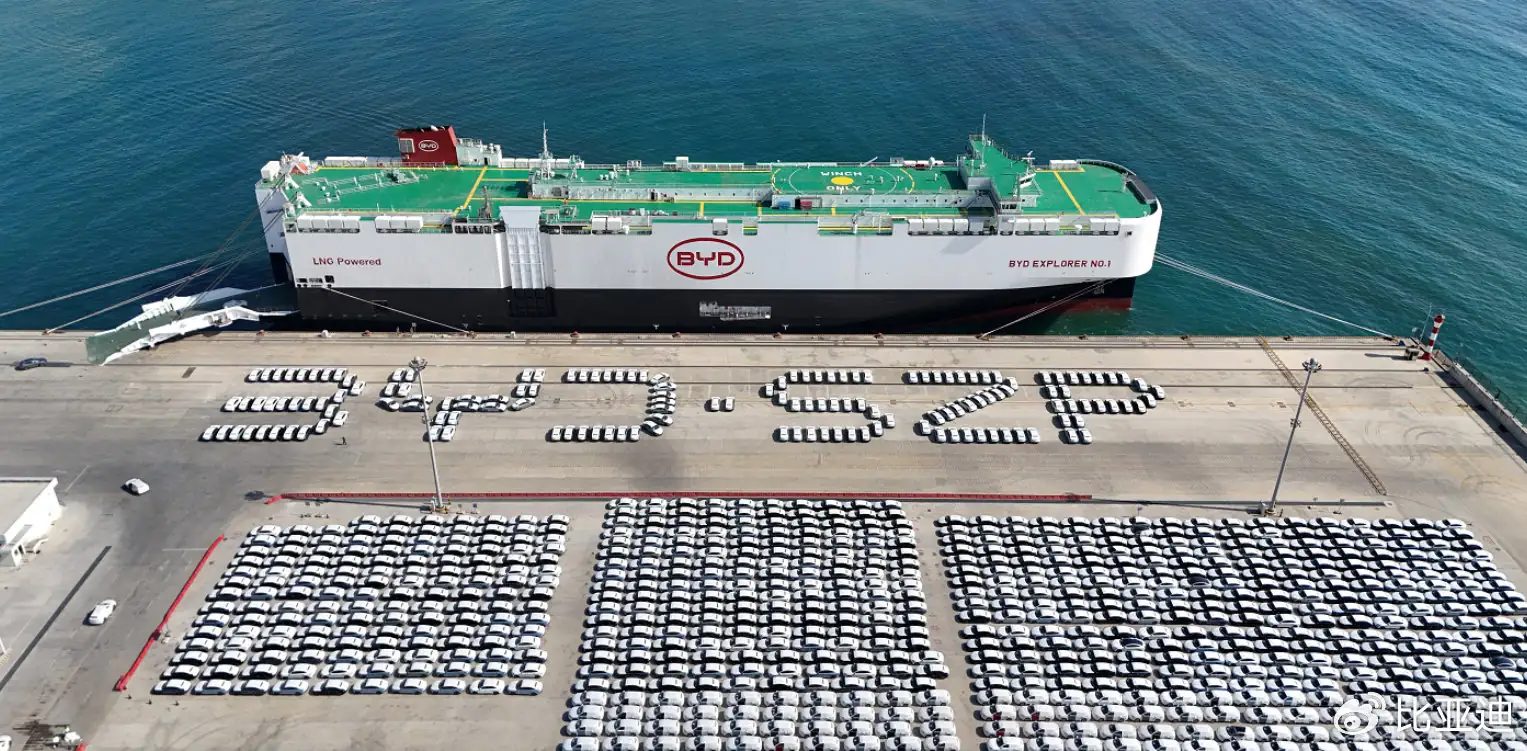
Despite all the troubles, most of the world's largest shipping companies are optimistic about their ability to serve this growing sector.
Everyone is currently working to provide comfortable infrastructure for fast and safe charging of electric vehicles in the port. Perhaps also on board the ship, but after arrival.
That this sector of cargo transportation will expand despite everything, no one doubts.
- Position:
- Chief mate
- Position:
- 2nd engineer
- Position:
- Chief engineer
- Position:
- Electrician engineer
